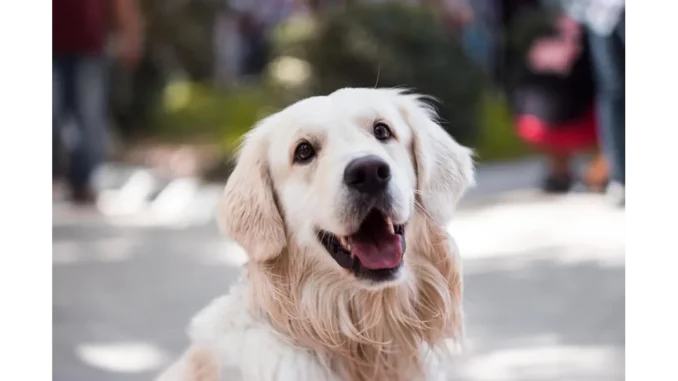
Designing a Dog-Friendly Backyard: 11 Elegant Landscaping Tips for Your Furry Friends
Creating an inviting backyard that caters to both your family and your beloved dogs is a delightful and rewarding challenge. Our furry companions are integral members of the household, and crafting an outdoor space that meets their needs while maintaining aesthetic appeal is essential. Here are 11 refined tips for designing a dog-friendly backyard that ensures both you and your pets can relish the space.
1. Prioritise Dog Safety
The cornerstone of a dog-friendly backyard is security. A robust fence is indispensable to prevent your dogs from wandering off and to keep other animals at bay. Popular choices include chain link, vinyl, and wood fences. While invisible fencing might seem convenient, it can be unreliable during power outages or if the dog’s collar malfunctions. Moreover, it does not deter other animals from entering your yard.
2. Add Paw-Friendly Walkways
Smooth, paw-friendly walkways elevate both the comfort and safety of your backyard for your dogs. Light-coloured, heat-reflecting pavers or flagstones are excellent choices for pathways as they remain cool and are gentle on your dog’s paws. Avoid materials like pea gravel, which can be uncomfortable and may get lodged in your dog’s paws.
3. Mind Your Mulch
Mulch is a staple in many gardens, but not all types are safe for dogs. Pine straw mulch and pine bark are generally safe options, whereas cocoa mulch and tyre mulch should be avoided due to their toxicity. Cedar mulch is another commendable choice, being chemical-free and offering natural flea protection. Regardless of the type of mulch, ensure your dog does not ingest it, as it can cause intestinal blockages.
4. Create Shady Spots
Providing shaded areas in your backyard is paramount for your dog’s comfort, especially during warm weather. Planting fast-growing shade trees, setting up umbrella stands, or installing pergolas adorned with plants can create cool retreats. These shaded spots not only protect your dog from the sun but also enhance the aesthetic allure of your backyard.
5. Provide Plenty of Water
Ensuring your dog has access to fresh water at all times is vital for their well-being. Automatic watering bowls or puppy pools can help keep your dog hydrated and cool. Installing a water feature, such as a pond or a fountain, can provide a constant source of fresh water and add a decorative element to your backyard.
6. Include a Place to Potty
Designating a specific potty area for your dog can help protect your grass and plants from urine damage. Select a convenient spot, preferably in a corner of your yard, and cover it with materials like pea gravel or mulch. Installing a marking post, such as a tree stump or a faux fire hydrant, can encourage your dog to use the designated area. Training your dog to use this spot can simplify clean-up and prevent damage to the rest of your yard.
7. Select Dog-Friendly Landscape Plants
When choosing plants for your backyard, consider their resilience to dog activities and their safety for your pets. Opt for sturdy plants that can withstand rough play and avoid plants with sharp thorns or toxic foliage. Some dog-friendly plants include camellias, coreopsis, and nasturtiums. Additionally, setting plants back from pathways and areas where your dog frequently runs can help protect them from damage.
8. Opt for Dog-Resistant Turfgrass
If you have a grassy yard, selecting the right type of turfgrass is crucial for maintaining a healthy lawn. Bermudagrass, Kentucky bluegrass, perennial ryegrass, and tall fescue are all excellent options for dog-resistant turfgrass. These grasses are durable, recover swiftly from damage, and are resistant to foot traffic and pet urine.
9. Consider Grass Alternatives
Grass can be high-maintenance and may not always withstand the wear and tear caused by dogs. Alternatives like gravel, ornamental grasses, and ground cover plants can provide a durable and low-maintenance solution. Ground covers such as Irish moss, Labrador violet, and silver carpet are dog-friendly options that can add colour and texture to your yard.
10. Ponder Artificial Turf Carefully
Artificial turf can be a practical substitute for natural grass, but it has its pros and cons. While it conserves water and requires less maintenance, artificial turf can retain heat and may need regular cleaning to prevent bacteria and odour buildup. Additionally, it is important to consider the impact of artificial turf on existing trees and soil microorganisms. Consulting with an arborist can help determine the best approach for your specific situation.
11. Grow Safe Plants for Dogs
Ensuring that the plants in your backyard are safe for your dogs is crucial. Many common plants can be toxic if ingested by pets. Avoid plants like American holly, azaleas, and yew, which can be harmful to dogs. Instead, choose non-toxic plants that add beauty to your yard without posing a risk to your pets.
Designing a dog-friendly backyard involves thoughtful planning and consideration of both your dog’s needs and the overall aesthetic of your outdoor space. By prioritising safety, providing shaded areas, selecting dog-resistant plants, and considering alternatives to natural grass, you can create a backyard that is both beautiful and functional. With these tips, you can enjoy a harmonious outdoor space that accommodates the needs of your furry friends while maintaining a visually appealing landscape.


Be the first to comment